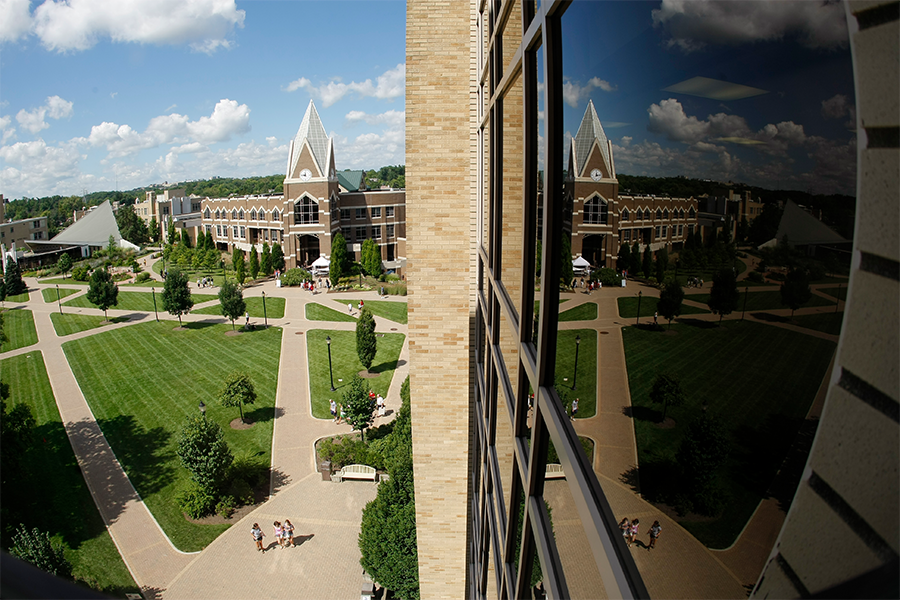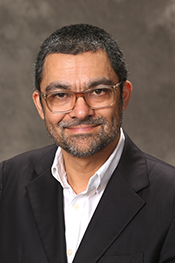
Xavier professor Tiro teams up with National Park Service for Study at Saratoga
Nov 30, 2022
Nearly 250 years since the “shot heard round the world” marked the outbreak of the American Revolution, longtime Xavier history professor Karim Tiro is wrapping up an extensive project on New York’s Saratoga National Historical Park, one of the Revolution’s most famous sites.
 To further explore the stories of Native Americans at the park site and in the surrounding area, the National Park Service engaged Tiro to conduct his study, “A History of Indigenous Peoples at Saratoga.”
To further explore the stories of Native Americans at the park site and in the surrounding area, the National Park Service engaged Tiro to conduct his study, “A History of Indigenous Peoples at Saratoga.” “The National Park Service routinely has researchers work on their sites to help them better understand the places they’re interpreting and the events that took place there.” said Tiro, who specializes in North American history. “This is with a view towards improving accuracy, and also just changing things up a bit. People go to these parks year in and year out, and they don’t want to be always showing them the same thing.”
The report not only highlights this historic activity, but also establishes the relationship between Saratoga and several contemporary Indigenous groups, including the Stockbridge-Munsee Band of Mohican Indians of Wisconsin, Mohawk communities in Ontario, Quebec, and New York, and Oneida communities in New York, Wisconsin, and Ontario.
Tiro, a New Yorker who joined Xavier in 1999, teaches courses focused on colonial, revolutionary, and early national periods, as well as on the history of Native Americans, the War of 1812, and epidemics.
Tiro spent a year studying in Canada as an undergraduate. While there, he became aware of the considerable presence of the Mohawk Indians, a nation whose ancestral lands lie in upstate New York. He grew interested in the history behind their relocation from New York and its effects on the nation, both historically and contemporarily.
That experience largely shaped Tiro’s future research, as he would extensively study the history of natives and settlers in the Northeast while earning his master’s and doctorate at the University of Pennsylvania.
Tiro said an objective of this study is to help establish connections with tribes that receive little recognition despite having held significant roles in the American Revolution.
“One of the goals of the project is for the park to engage with Native communities today, and to bolster their relationships,” Tiro said. “This forms a basis for engaging them.”
Through the project, Saratoga National Park will gain insight into what sort of new stories, tours, events, exhibits, and more the park can offer visitors to help highlight the importance of Native peoples at the park.
Tiro’s research also shines a spotlight on the Schuyler family, which has a connection not only to Saratoga, but also to Lin-Manuel Miranda’s hit musical, “Hamilton.”
One of the national park’s five sites is the home that General Philip Schuyler, a key Patriot figure in the American Revolution, built in 1777. Because the Schuyler family played an integral role in the immensely popular musical, park visitors became increasingly interested in visiting the site in recent years.
“While visitors knew certain aspects of the Schuyler story, there were others that they didn’t know as much about, such as the Schuyler family’s long history with Native Americans in the area,” Tiro said. “They started out in the fur trade, which is how they initially made their wealth, and members of the family were key diplomats between the colony of New York and Native Americans in the area. That’s a story that the park wanted fleshed out a bit.”
Nearly four years after launching this study, its results have been officially accepted by the National Park Service.
Having begun this work in early 2019, Tiro said the project took nearly twice as long to complete as initially expected, thanks in part to delays caused by the pandemic. Once he officially concludes this study, Tiro looks forward to resuming his earlier research on John Johnston, who served as a federal Indian agent in Piqua, Ohio, in the early 19th century.